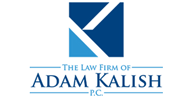In addition to providing a large cash infusion to hospitals and broader access to COVID-19 testing to individuals, the CARES Act aims to boost the economy with over $2 trillion in relief, ranging from individual rebates and small business loans to increased unemployment benefits and a wide variety of tax breaks.
Individual Stimulus Payments
Once the IRS has either your 2019 return, 2018 return, or Social Security statement, it’s going to cut you a check for $1,200 (if single/$2,400 if married filing jointly) PLUS $500 for each child under the age of 17. Unlike the initial version of the bill, the payment is in no way limited to your tax liability or dependent on you having earned a minimum amount of “qualifying income.”
those on the higher end of the income scale will be shut out of the program because the payment phases out once your “adjusted gross income (AGI)” — think: total income minus a handful of deductions — exceeds $75,000 (if single, $150,000 if married). Once over those thresholds, you’ll lose $5 of your payment for every $100 your AGI exceeds those thresholds.
Small Business Loans
The CARES Act provides that businesses with fewer than 500 employees — including sole proprietors and nonprofits– will have access to nearly $350 billion in loans under Section 7 of the Small Business Act during the “covered period,” which runs from February 15, 2020 through June 30, 2020. The loans, which are referred to as “paycheck protection loans” and are fully guaranteed by the federal government through December 31, 2020 (returning to an 85% guarantee for loans greater than $150,000 after that date), are generally limited to the LESSER OF:the sum of 1) average monthly “payroll costs” for the 1 year period ending on the date the loan was made (an alternative calculation is available for seasonal employers) multiplied by 2.5, and 2) any disaster loan taken out after January 31, 2020 that has been refinanced into a paycheck protection loan, and $10 million.
Loan Forgiveness of Paycheck Protection Loans
A separate section of the CARES Act calls for a portion of the aforementioned paycheck protection loans to be forgiven on a tax-free basis. The amount to be forgiven is the sum of the following payments made by the borrower during the 8-week period beginning on the date of the loan:
- payroll costs (as defined above)
- mortgage interest,
- rent,
- certain utility payments.
To seek forgiveness, a borrower must submit to the lender an application that includes documentation verifying the number of employees and pay rates, and cancelled checks showing mortgage, rent, or utility payments.
Emergency Government Disaster Loan and Grant
The CARES Act also expands access to Economic Injury Disaster Loans under Section 7(b)(2) of the Small Business Act to include not only businesses with fewer than 500 employees, but also sole proprietors and ESOPs. For any loan made under this program before December 31, 2020, no personal guarantee will be required on loans below $200,000. The bill allows a disaster loan to be taken out between January 31, 2020 and the date on which a paycheck protection loan is available for reasons “other than paying payroll costs.” Presumably, any loan taken out for payroll purposes will be confined to the paycheck protection loans described above.
In addition, the Act creates a new Emergency Grant to allow a business that has applied for a disaster loan to get an immediate advance of up to $10,000. The advance can be used to maintain payroll, and is not required to be repaid, even if the borrower’s request for a 7(b) loan is denied.
Subsidy for Certain Loan Payments
The CARES Act also provides benefits to those with loans under Section 7(a) of the Small Business Act OTHER THAN the new paycheck protection loans, in the form of a government subsidy whereby the SBA will pay six months of principal, interest and fees on qualifying loans.

